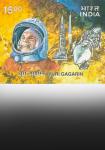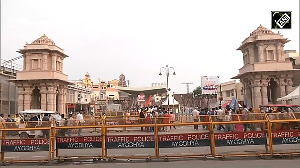Louis Vuitton, Bvlgari, Christian Dior and their ilk have discovered the Indian rich and everyone is exulting over the coming of age of the Indian consumer. But long before these trendy luxury stores made their fashionable and perfumed entries into India, the Indian middle class consumer made a significant if little-noticed transition up the value chain.
It was long believed that Indians equated value with "cheap" or "free". But now that competition has given them the choice, Indian consumers have learnt to weigh value as a combination of price and service. Few companies have learnt this truth in quick time than public sector service providers.
State-owned domestic carrier Indian Airlines (now called Air India after the merger with the eponymous flag carrier) was among the first to feel the pinch when private competitors began eating into market share.
It could be argued that the government airline, with its inherent decision-making rigidities, had to face competition from a private sector that has the flexibility to slash prices. (Of course, such price competition would have been exceptional in pre-liberalisation times with the Monopolies & Restrictive Trade Practices Commission playing its time-honoured role as competition-buster.)
The fact is that the threat to Indian Airlines's dominance began long before the days of cheap fares. Few will remember that in the initial days of the open skies policy, private carriers were not allowed to charge consumers less than Indian Airlines on any route (and several went bankrupt as a result).
Yet, consumers were willing to pay for the demonstrably superior service of those private competitors that learnt to manage their costs.
Today, the state-owned airline's market share is less than a fifth and it has ceased to be a significant competitor. The real battle for market share is now being fought between private players Jet Airways and upstart newcomer Kingfisher Airlines. The two, ironically, are also competing for official patronage for their plans to start international operations.
Likewise, state-owned telecom companies BSNL and MTNL may dominate the fixed-line market. But in the larger, faster-growing mobile telecom services the combined share of these behemoths is about a third.
This performance is despite favourable treatment from the government. First, part of private competitors' earnings is impounded for rural connectivity. Second, the government has preferentially assigned the public utilities much-coveted spectrum, the radio frequency that enables mobile communications, despite a long private sector waiting list.
In telecom, private sector entry changed the nature of the game. Fixed lines now account for less than a fifth of the total telecom services and their growth has been stagnant. The growth of mobile services, on the other hand, is among the world's fastest though the cost of a mobile call is marginally higher than a land-line call.
While it is true that the mobile market has grown as telecom tariffs have fallen, the threat to the government monopolies began before that. Consumers, long deprived of the privilege of making a simple telephone call, readily accepted higher prices in return for easier connectivity.
In that sense, the government has done consumers a signal service in recently lifting the limits on the number of competitors per service area.
Government broadcaster Doordarshan lost the battle long ago as cable and satellite gobbled up TV advertising revenues, if not viewers. At 70 million homes, the reach of cable and satellite broadcasting still lags DD's 100 million-plus but it is rapidly catching up.
Advertisers understand this well. As a result, DD's 20-odd channels account for less than 10 per cent of TV advertising revenues.
DD's direct-to-home service DD Direct is facing a similar problem. The service covers 4 million viewers and is free-to-air (consumers only have to pay for a set-top box). This coverage is higher than the 3.6 million viewers that watch the two relatively expensive private DTH services.
Yet DD Direct is not attracting broadcasters that see little value in paying the channel hefty carriage fees. So, more than 90 per cent of the channels that DD Direct broadcasts now are owned by Doordarshan.
In the Railways, Lalu Prasad had tried to counter low-cost airline fares by refurbishing first- and second-class air-conditioned services and holding the price-line -- to little avail. Attempts to woo back freight operations from private road services have met with similar results.
The list could go on. The point to note is that many of these services are either free, cheaper or priced on a par with private competitors. Yet, consumers have consistently demonstrated a willingness to pay for competing services because they see a perceived value in them.
So, middle class consumers may not emulate their globe-trotting counterparts in the rich lists. They may decline to pay Rs 25,000 for a pair of branded bathroom slippers or Rs 100,000 for a monogrammed handbag. But they are shrewd enough to understand value when they see it. This is a lesson not just for public sector giants but for private monopolists too.






 © 2025
© 2025